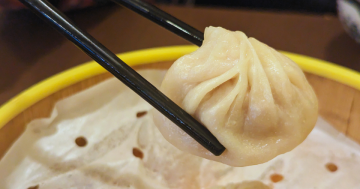“I am not alone when I say that dieting by eating less and exercising more is by far one of the major blocks to permanent physical change” – Sebastian Jago (Head Coach Elements4Life)
Stubborn Fat Burning – The Answers
This is an in-depth look at how the body works in regard to fat stores and how best to approach your desire to lose that stubborn fat. This article is rather technical so I suggest you sit back and read it when you are ready to consume the information. I will be writing more on other aspects of this subject but hopefully some of you get something from this article and can adapt it into your nutrition and training mindset.
This method of eating less and training more does not work unless you want to be a muscle depleted walking skeleton and look like an old leather boot by the time you are 40. Be my guest as it is a harsh reality. Stubborn fat is resilient and will not respond to these types of programs. The opposite in most cases occurs. Firstly, make sure to be consistent with your food intake, eat 4-5 times a day, and maintain your training program with a focus to your goal because procrastination has never supported success. Secondly, we must feel comfortable in our body and the fitness industry is not just about shredding fat and creating bikini bodies. These things are trivial and are considered a bonus to the dedication applied towards self improvement and self value. Love yourself enough to work on the person you are today to become a stronger and more aware person tomorrow. The benefits will follow. Life is a journey and an adventure that is completed with a million steps. Start training with intent, not out of habit.
Diets simply don’t work for the long term and if you want to stop the vicious cycle you must learn how to eat and train effectively.
As a coach with thousands of sessions and experience with 100’s of clients, I have come across numerous circumstances where bodies react differently to different training and nutrition programs. It is a forever learning experience. The one thing that lurks beneath and takes a while to show its head is the stubborn fat areas. Once identified these zones become somewhat of a frustration to many and become a never ending battle. The article below has been extracted from my own knowledge and various sources and I hope it is of help to those of you looking to take your stubborn fat loss to the next level. How to hit that stubborn fat! – Sebastian Ellis
Quick Tips
- Spot reduction can occur, but on a very small scale. Attacking stubborn fat and spot reduction are two different things.
- Stubborn fat is physiologically different than other fat. It has a high density of alpha-receptors compared to betas, is more insulin sensitive, and receives less blood flow than less stubborn fat.
- Dieting by eating less and exercising more is by far one of the major blocks to permanent change.
- Supplements such as green tea extract, forskolin, and yohimbine HCL can help with stubborn body fat, once you get your diet in order.
- For the true cut back of stubborn fat, try removing all processed sugars and alcohol from the diet. Even if for a specified timeline in order to enhance your success.
- Nutrition, 2 x HIIT Sessions per week, 2+ specific “heavy” weight sessions, variation, compound functional movements and track all progressions.
What Is Stubborn Fat?
Stubborn fat are the pockets of fat found in specific areas of the body that seem to burn at a slower rate or in a sense not at all. Targeting stubborn fat is about diet, exercise and supplementation. Spot reduction is essentially impossible. Targeting stubborn fat is not only possible but probable, if you understand what you’re doing. The first thing to know about stubborn fat is that it is physiologically different than other fat. Stubborn fat has a high density of alpha-receptors compared to betas, is more insulin sensitive, and receives less blood flow than less stubborn fat. Subcutaneous fat is more stubborn than visceral fat (the fat around your organs) or intramuscular fat (the fat in your muscle). The most stubborn areas of fat are the hips, butt, thighs of women, and the love handles on men.
Biochemistry of Fat Burning!
To burn fat you have to release it from a fat cell. That is called lipolysis. That fat then has to be brought to another cell to be burned. This is where blood supply to and from tissues is important. Finally the fat has to get inside a cell and be burned. This last step is called lipid oxidation. Stubborn fat releases its fat more slowly the non-stubborn fat. This is due to two different types of receptors in fat cells. Your major fat releasing hormones are the catecholamines (norepinephrine and epinephrine to Americans and noradrenaline and adrenaline to most of the rest of the world).
These hormones bind receptors in fat tissue that send the signal to speed fat release or slow fat release. These receptors are known as alpha and beta-receptors. The betas speed fat release. These receptors have this effect largely because they turn on intracellular signalling that either speeds the activity of hormone sensitive lipase (HSL), the major fat releasing enzyme in the body, or decrease its activity.
For the biochemists among you, this is all mediated by cyclic AMP (cAMP). So, to beat stubborn fat you’ll need to do things that increase the activity of beta-receptors and decrease the activity of alpha-receptors.
Insulin Sensitivity and Stubborn Fat!
The vast majority of fitness and health professionals misunderstand insulin resistance. Most think insulin resistance is all one thing. In reality, insulin sensitivity and resistance is tissue specific. If you’re used to thinking about insulin resistance in the typical way you will not understand stubborn fat. Stubborn fat is more insulin sensitive or less insulin resistant than regular fat.
The normal action of insulin on fat cells is to decrease the activity of HSL, the major fat releasing enzyme, and increase the activity LPL, the major fat storing enzyme. A fat cell that’s more insulin resistant stores less fat and releases more of it. A fat cell that’s more insulin sensitive stores more fat and releases less of it. Stubborn fat is more insulin sensitive than other types of fat. Not only that, but insulin has an effect on the activity of alpha and beta-receptors as well, increasing the relative expression of the alphas compared to the betas.
When it comes to stubborn fat, insulin is not your friend for multiple reasons. Other hormones get in on the action too. Thyroid activity ramps up beta-receptor activity and turns down alpha-receptor activity. Anything that disrupts thyroid function isn’t helpful for stubborn fat. Oestrogen increases the activity of alpha-receptors. High oestrogen states such as the late follicular phase and the early luteal phase of the female cycle are times during the month when female stubborn body fat is more stubborn.
Heat and Blood Flow!
Stubborn fat gets less blood flow, which means even if the fat is released it doesn’t get moved out of the area to be burned elsewhere very easily. First off, alpha-receptors impact blood flow too. More alpha-receptors in an area mean less blood supply to that area. Next, stubborn fat is in areas that are harder for the body to heat up.
Saddlebags and love handles are further away from the centre of the body and tend to be “colder”. The practicality of this information is limited of course. There are few ways to heat local areas of the body up, but using sauna, hyperthermia baths, massage, high temp workout areas or even those old neoprene ab belts may not have been such a silly idea when looked through this lens. Whether they can make a real difference I’m not sure, but people have done stranger things in pursuit of stubborn fat loss.
How to Beat Stubborn Fat?
Now that you understand many of the angles involved with stubborn fat, let’s talk about the fix. There are three simple steps that are easier said than done:
1. Stop dieting
2. Cycle the diet
3. Target the area
Stop Dieting
I am not alone when I say that dieting by eating less and exercising more is by far one of the major blocks to permanent physical change. This is especially true of stubborn fat. When you follow this method the body engages in severe metabolic compensation. Adaptive thermogenesis is one aspect of this. You eat less and exercise more and your body will make you more hungry, give you less energy, induce insatiable cravings and decrease your resting metabolic rate around 300 calories per day on average. In other words, your body has primed itself to resist further losses in body fat as well as made it far more likely you’ll soon engage in a three month doughnut binge. And guess where you’re more likely to store all the regained fat? You guessed it, the stubborn fat areas you were trying to burn in the first place! So, not only does dieting make you fatter, but it makes your stubborn fat more stubborn.
Two of the main ways it does this is through increased insulin sensitivity in stubborn fat tissue and decreased thyroid output which tilts things even more in favor of alpha receptor activity versus beta. Dieting in the traditional way is a recipe for making stubborn fat more greedy and stingy. Dieting may be making your fat parts fatter. To stop dieting you simply do one of two things. You either eat less and exercise less (ELEL) or you eat more and exercise more (EMEM). What you don’t do is continue eating less and exercising more. ELEL is an approach where low intensity exercise like walking dominates and only a few sessions of weight training are done during the week. This allows a very low calorie or low carb diet without the compensations created by eating less and exercising more. A good way to think of this approach is as a 3:2:1 for diet and exercise. Three meals per day, two of them are protein and veggies based and only one contains starch. This is matched with three rest and recovery activities (i.e. massage, yoga, naps), two traditional weight training workouts and one hour or more of slow walking on all or most days. The opposite of ELEL is EMEM.
In this approach calories and carb intake are high to fuel lots of intense daily activity through the week. This is a 3:2:2 approach. Three meals per day, plus two protein based snacks, and two times the starch intake at the first meal after an intense workout. This is matched by three weight workouts, two metabolic conditioning sessions and two traditional cardio workouts per week. Both the ELEL and EMEM approach will decrease metabolic compensation, but the EMEM approach is probably the better approach to keep the metabolism humming and stubborn fat burning.
Cycle The Diet
You can’t get comfortable with any one system either. The metabolism is highly reactive and adaptive, so while it will compensate much less with an ELEL or EMEM approach, it’ll compensate none-the-less. To circumvent this compensation it’s a good idea to cycle the diet in a way that keeps the metabolism guessing. This once again keeps the thyroid activity elevated, keeps leptin levels from dropping too low and keeps insulin sensitivity at a manageable level. When it comes to calories, hormones, and stubborn fat, you’re looking for the Goldilocks effect. Not too much, not too little, but just right.
One to two weeks in an ELEL approach followed by one to two weeks in an EMEM approach works great. Women can also time this with their menstrual cycle. The week before and during menses will be the lowest oestrogen times, making those pesky alpha-receptors far easier to circumvent. This would be the time you’d want to alter diet, exercise and lifestyle towards fat loss efforts. This is also a time of increased cravings and hunger for women due to altered brain chemistry that accompanies the hormone changes. One clinical pearl I can give that almost completely negates this effect is the use of unsweetened baking cocoa powder in water. Cocoa raises dopamine and serotonin, the same brain chemicals that drop around menses.
Target the Area
When we talk about targeting the area we’re not talking about exercise, we’re talking about timing diet, exercise and supplementation correctly. When you burn fat, you burn it from all over your body, including your stubborn fat. It’s just that under normal circumstances the stubborn fat burns much more slowly. This is why you can have people getting lean but noticing their lower body fat (women) or love handles (men) seem to not be responding… or even appearing fatter. This is of course not the case as fat loss is likely occurring in the stubborn zones too. But when the rest of the body is reducing so much faster it creates the illusion that the stubborn areas are worse off.
The first step is to remember that fat loss is about reducing calories and balancing hormones. In this way you will need to choose which part of your cycle will put you in the most deficit. You’ll use one part of the cycle, I suggest the ELEL, to “starve the fat”. Then you’ll use the other part of the cycle, I suggest EMEM, to “feed the lean” and protect against metabolic compensation and hormonal changes that make stubborn fat more stubborn.
In addition there are supplements that can help. My two favourites are green tea extract and coleus forskohlii (forskolin). Both of these supplements work on the same cellular messengers that are activated by the catecholamines, only they don’t do it by binding alpha and beta-receptors. This goes a long way to taking the brakes off of stubborn body fat. Keep in mind these work best in lower insulin states = No Sugar, High Glycemic Food Choices and Alcohol. There are also ways to directly block alpha-receptor activation. This can be done by the use of yohimbine HCL, synephrine, and berberine. Yohimbine HCL is probably the best here, but it’s best used under fasted exercise conditions and you can develop tolerance to it. It also can be very stimulating. Berberine is an under appreciated insulin reducer and has some weak alpha-receptor blocking effects. Finally, you certainly can use the ephedrine/caffeine combination with or without aspirin, or clenbuterol if you can find it. As a natural healthcare provider, my bias is against the use of these approaches for safety reasons.
Final Thoughts
- Beating stubborn fat takes a strict diet, exercise and supplementation. Read that again!
- Exercising an area hoping to burn fat from that area doesn’t work very well. The body burns fat from all over. Stubborn fat burns more slowly.
- Stubborn fat is stubborn because of greater insulin sensitivity, more alpha receptors and poor blood flow.
- Dieting makes stubborn fat more stubborn due to insulin and thyroid changes that enhance alpha and reduce beta receptor activity.
- Stop dieting by matching intake of food with output of exercise.
- ELEL (eat less and exercise less) and EMEM (eat more and exercise more) reduce metabolic compensation and counter hormonal changes that make stubborn fat more stubborn.
- Cycling the diet between ELEL and EMEM helps continue to reduce negative hormonal changes and keeps the fat burning process engaged in stubborn fat.
- Targeted supplementation including green tea, coleus, berberine, yohimbine and others can speed fat loss in stubborn areas once the diet is in line.
- 2 x HIIT Sessions per week, 2+ Specific “heavy” weight sessions, variation, compound functional movements and sequences and track all progressions
- Get a coach – Email – [email protected]
Another discussion topic for another day will be about leptin and how this effects energy and fat stores.
References
Sebastian Ellis – Head Coach – Elements4Life
T-Nation Camps, et al. Weight loss, weight maintenance, and adaptive thermogenesis. American Journal of Clinical Nutrition. 2013;97(5):990-994. Ibrahim, et al. Subcutaneous and visceral adipose tissue: structural and functional differences. Obesity Reviews. January 2010;11(1):11-18. Silva, et al. Thyroid-adrenergic interactions: physiological and clinical implications. Thyroid. February 2008;18(2):157-165. Reckless, et al. Alpha-adrenergic receptor activity, cyclic AMP and lipolysis in adipose tissue of hypothyroid man and rat. The Journal Of Endocrinology. March 1976;68(3):419-430. Gormsen, et al. Estradiol acutely inhibits whole body lipid oxidation and attenuates lipolysis in subcutaneous adipose tissue: a randomized, placebo-controlled study in postmenopausal women. October 2012;167(4):543-551. Pedersen, et al. Estrogen controls lipolysis by up-regulating alpha2A-adrenergic receptors directly in human adipose tissue through the estrogen receptor alpha. Implications for the female fat distribution. The Journal of Clinical Endocrinology and Metabolism. April 2004;89(4):1869-1878. Lafontan, et al. Adrenergic regulation of adipocyte metabolism. October 1997;12(s1):6-20.













